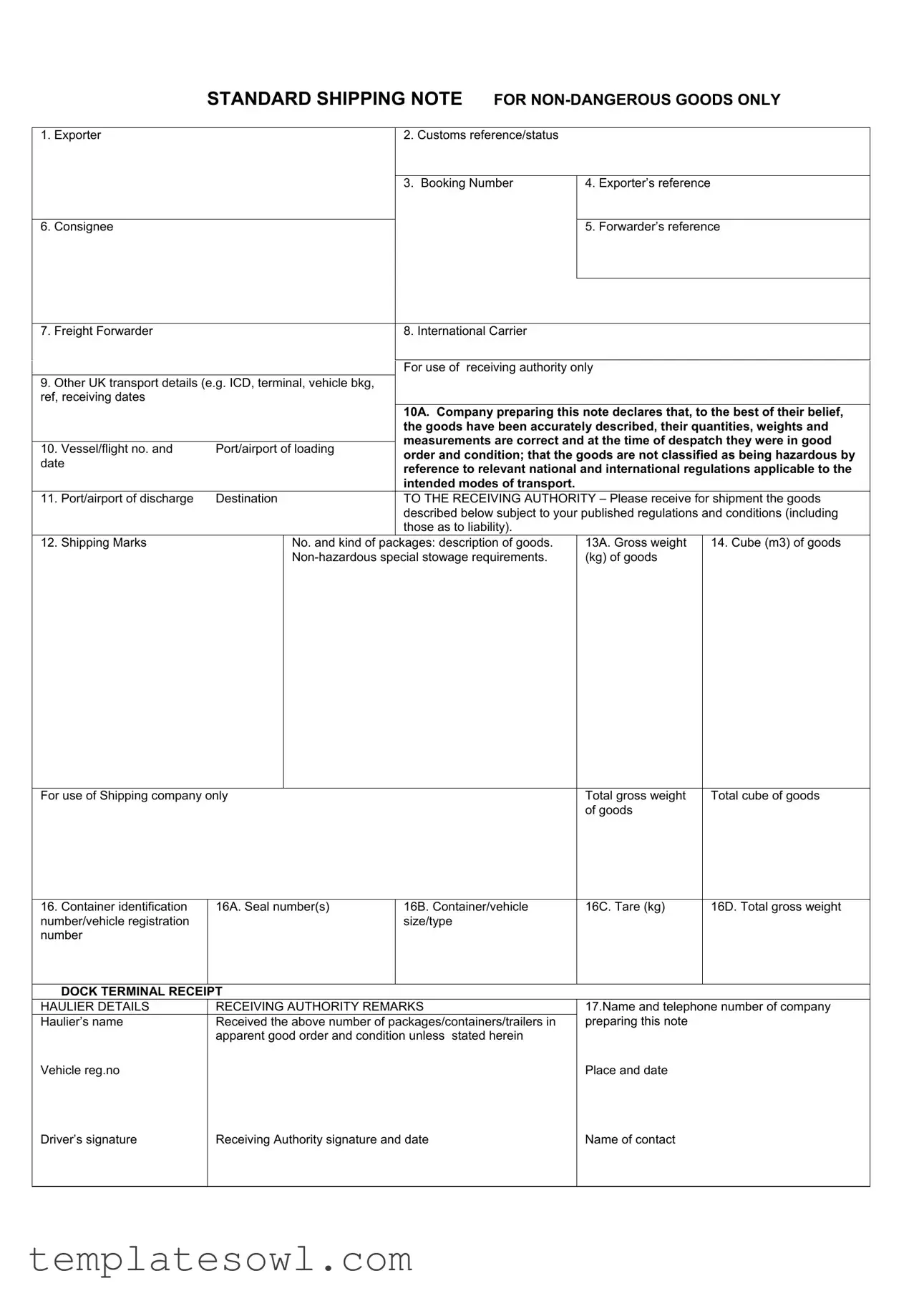Filling out the Shipping Note form accurately is crucial for smooth transport and compliance with regulations. However, many individuals encounter pitfalls during this process. One common mistake is leaving out essential information. Users should always fill in all mandatory fields to avoid delays or issues with shipment.
Another frequent error is the incorrect entry of details, particularly in the "Exporter" and "Consignee" sections. If names, addresses, or contact details do not match official records, it can lead to significant complications at customs.
Additionally, many people fail to check the customs reference/status. This section is vital, and omitting or inaccurately entering this reference can delay the process or even result in penalties. Always ensure that this information is clearly stated and verified.
A common oversight occurs with the “Container identification” and “Seal number(s)” sections. Individuals sometimes enter incomplete or incorrect numbers here. Ensuring these match the actual shipping container is key to preventing confusion or misdelivered goods.
Another area where mistakes can happen is during the declaration regarding the condition of the goods. Users might neglect to confirm that the goods are not classified as hazardous, a critical aspect that needs careful attention. Failing to properly classify the goods could lead to risks and legal repercussions.
Some users also confuse the weight measurements. Overestimating or underestimating the gross weight can cause problems later on, especially if discrepancies arise during inspections. Make sure to double-check the weights for accuracy.
Additionally, the “Vessel/flight number and Port/airport of loading” section often contains errors. Incorrect entry of these details may impede tracking the shipment, which can be frustrating for all parties involved.
Another issue relates to the "Shipping Marks". This section, meant to describe the goods, is sometimes completed inaccurately or too vaguely. Clear descriptions help avoid confusion and ensure proper handling of the shipment.
Some individuals neglect the section for “Other UK transport details”, which is vital for understanding the logistics of the shipment’s route. Providing this information helps receiving authorities streamline processing and delivery.
Lastly, it's vital to sign the Shipping Note correctly. Individuals sometimes forget to include the signature and date of the sender or the receiving authority, which may nullify the shipping document. Always remember to complete this step to ensure the validity of the form.
